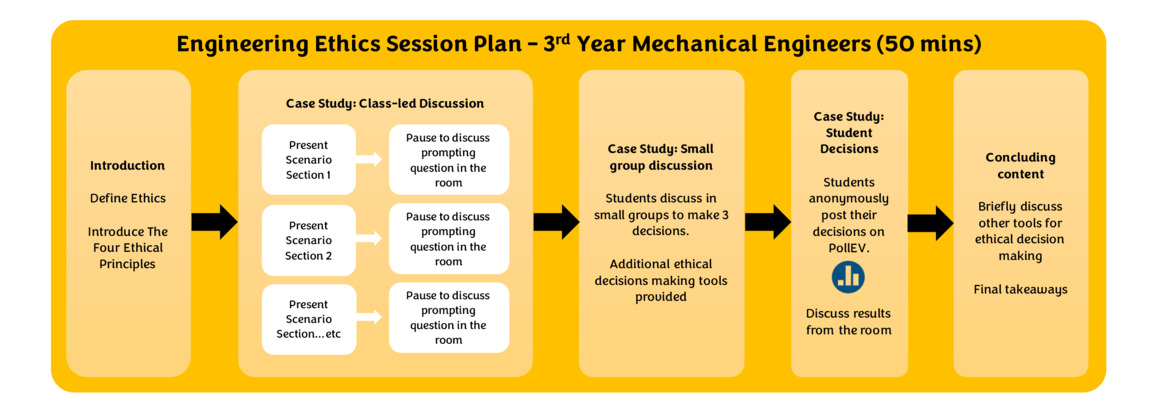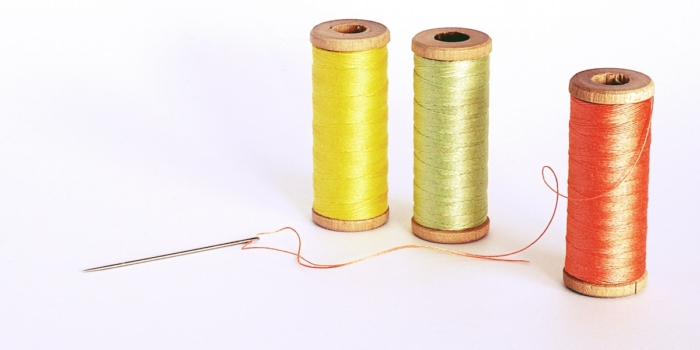 Dr. Jude Bramton of the University of Bristol discusses her first-hand experience of using the Engineering Ethics Toolkit and what lessons she learnt.
Dr. Jude Bramton of the University of Bristol discusses her first-hand experience of using the Engineering Ethics Toolkit and what lessons she learnt.
Starting off
Let me set the scene. It’s a cold January morning after the winter break and I need to prepare some Engineering Ethics content for our third year Mechanical Engineers. The students have never been taught this topic, and I have never taught it.
I’m apprehensive – many of our students are fantastic engineering scientists/mathematicians and I’m not sure how they will engage with a subject that is more discussive and, unlike their more technical subjects, a subject with no single correct answer.
Nonetheless, my task is to design a 50-minute session for ca. 180 undergraduate Mechanical Engineers to introduce the concept of Engineering Ethics and start to build this thinking into their engineering mindset. The session will be in a flatbed teaching space, where students will be sitting in groups they have been working in for a number of weeks.
For a bit more context, the content is assessed eventually as part of a group coursework where students assess the ethical implications of a specific design concept they have come up with.
Designing the session with the help of the Toolkit
From doing a little bit of research online, I came across the Engineering Ethics Toolkit from the EPC – and I was so grateful.
I started off by reviewing all 8 case studies available at the time, and reading them in the context of my session. I picked one that I felt was most appropriate for the level and the subject matter and chose the Solar Panels in a Desert Oil Field case study.
I used the case study in a way that worked for me – that’s the beauty of this resource, you can make it what you want.
I put my session together using the case study as the basis, and including the Engineering Council’s principles of Engineering Ethics and some hand-picked tools from some of Toolkit’s guidance articles – for example, I used the 7-step guide to ethical decision making.
I used the text directly from the case study to make my slides. I introduced the scenario in parts, as recommended, and took questions/thoughts verbally from the students as we went. The students then had access to all of the scenario text on paper, and had 15-20 minutes to agree three decisions on the ethical dilemmas presented in the scenario. Students then had to post their group’s answers on PollEverywhere.
The overall session structure looked like this:
How did it go?
When I ran the session, one key component was ensuring I set my expectations for student participation and tolerance at the start of the session. I openly told students that, if they feel comfortable, they will need to be vocal and participative in the session to get the most from it. I literally asked them – “Is that something we think we can do?” – I got nods around the room (so far, so good).
Overall, the session went better than I could have expected. In fact, I think it was the most hands up I have ever had during a class. Not only did we hear from students who hadn’t openly contributed to class discussion before, but I had to actively stop taking points to keep to time. It made me wonder whether this topic, being presented as one with no wrong or right answers, enabled more students to feel comfortable contributing to a large class discussion. Students were very tolerant of each others’ ideas, and we encouraged differences of opinion.
For the small group discussions, I left a slide up with the three ethical dilemmas and the 7-step guide to ethical decision making as a prompt for those that needed it. During the small group discussions, I and supporting teaching staff wandered around the room observing, listening and helping to facilitate discussion, although this was rarely needed as engagement was fantastic. The small group sessions also allowed opportunities for contribution from those students who perhaps felt less comfortable raising points in the wider class discussion.
To my delight, the room was split on many decisions, allowing us to discuss all aspects of the dilemmas when we came to summarise as a larger class. I even observed one group being so split they were playing rock-paper-scissors to make their decision – not quite the ethical decision making tool we might advertise, but representative of the dilemma and engagement of students nonetheless!
Student feedback
I asked our Student Cohort Representative to gather some informal feedback from students who attended the session. Overall, the response was overwhelmingly positive, here are a few snippets:
“It was the best lecture I’ve had since I’ve been here.”
“The most interesting session, had me engaged.”
“It was the first time learning about the connections between engineering and ethics and it was really useful.”
“I enjoyed the participation and inclusion with the students during the lesson. It has favoured the growth of personal opinions and a greater clarity of the subject and its points of view. Furthermore, the addition of real-life examples gave more depth to the topic, facilitating listening and learning.”
“The session was very engaging and I liked the use of examples… This whole unit has showed me how there are more aspects of engineering to consider apart from just designing something. Engineers must always think of ethics and I believe this session has demonstrated that well.”
And finally, when asked “What was your overall impression of the session?” a student replied “Interesting and curious.” – what more could you ask for?
It was such a pleasant surprise to me that not only did students engage in the session, but they actively enjoyed the topic.
I’ve run it once, how would I improve it?
One thing I would do differently next time would be to allow even more time for discussion if at all possible. As discussed, I had to stop and move on, despite the engagement in the room at certain points.
I also reflect how it might have gone if the students weren’t as engaged at the start. If you have other teaching staff in the room, you can use them to demonstrate that it’s ok to have differences of opinion. A colleague and I openly disagreed with each other on a topic, and demonstrated that this was ok. Additionally, if larger class engagement doesn’t work for you, you could also go straight to the small group discussion.
In summary (and top tips!)
I now feel very comfortable, and excited, to be teaching engineering ethics. It has now also catalysed more content to be created to embed this theme further in our programme – so it doesn’t just become that “one off” lecture. However, I think providing specific time on this subject was very beneficial for the students, it gave them time and space to reflect on such a complex topic.
My takeaways and recommendations from this experience have been:
- Don’t be worried about the engagement – students will enjoy it and find it interesting.
- Set the expectations for participation and tolerance at the beginning, encouraging that there are no right or wrong answers.
- Use the Toolkit as you need it for your context – don’t be afraid to take only snippets from certain parts and make something your own.
- Use PollEV or similar to involve the whole cohort and demonstrate the overall difference of opinion in the room
- Give a good amount of time for discussion in small groups as well as in the larger class.
All in all, I would recommend the resources on the Engineering Ethics Toolkit to anyone. They can be easily adapted to your own contexts and there is a plethora of resources and knowledge that are proven to engage students and get them thinking ethically.
You can find out more about getting involved or contributing to the Engineering Ethics Toolkit here.
This blog is also available here.
Any views, thoughts, and opinions expressed herein are solely that of the author(s) and do not necessarily reflect the views, opinions, policies, or position of the Engineering Professors’ Council or the Toolkit sponsors and supporters.

 Dr. Jude Bramton of the University of Bristol discusses her first-hand experience of using the
Dr. Jude Bramton of the University of Bristol discusses her first-hand experience of using the 



